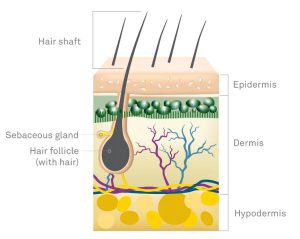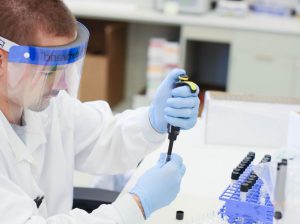Q: What is the difference between opiates and opioids?
In the midst of our nation’s opioid crisis, many people are confused about the differences between the terms opiates and opioids. The media uses them interchangeably; however there are significant distinctions between the two terms.
We asked Dr. Barry Sample, Senior Director of Science & Technology at Quest Diagnostics, to share his expertise to help eliminate any lingering misunderstandings. He says, “Opiates are opioids, but not all opioids are opiates.” He further explains:
Opiates, semi-synthetic opiates, and opioids
- Opiates refers to a natural, psychoactive substance with morphine-like effects derived from the flowering opium poppy plant that shares a number of chemical and structural characteristics. Opiates provide pain relief and depress the central nervous system in the human body. They are a subset of opioids.
- Semi-synthetic opiates are man-made substances derived from compounds found in the opium poppy. These drugs include hydrocodone, hydromorphone, oxycodone, and oxymorphone.
- Opioids refers to all drugs — synthetic, semi-synthetic, or naturally occurring — with morphine-like properties that act on the opioid receptor. More specifically, this broad term includes synthetic (e.g. fentanyl), semi-synthetic (e.g. oxycodone), and naturally occurring (e.g. morphine) substances as well as antagonists (e.g. naloxone) that bind with the opioid receptor in the body. Synthetic compounds such as fentanyl and tramadol, while able to act upon the opioid receptor, do not share structural similarity with naturally-occurring and semi-synthetic opiates.
Opioids according to the DOT
In the context of the new U.S. Department of Transportation (DOT) regulations, “opioids” refer to codeine, morphine, 6-acetylmorphine (6-AM), and to the four semi-synthetic opiates (hydrocodone, hydromorphone, oxycodone, and oxymorphone), which were added to the DOT panel effective January 1, 2018. Under the DOT rules “opioids” does not refer to the broader category of opioids – such as fentanyl or other synthetic and semi-synthetic opioids.
As an NLCP-certified laboratory, we are required to test to the Federal standards which is verified at each lab inspection. Simply put, we are in compliance with DOT standards. When Quest Diagnostics completes a DOT drug test panel, due to the initial testing technology utilized and the varying cutoffs, we report the following opioid drug groups:Quest Diagnostics does offer individual tests for certain of the synthetic and semi-synthetic opioids such as fentanyl, tramadol, and buprenorphine for non-DOT testing.
For more information, visit our website or contact us online.
 Your Privacy Choices
|
Privacy Notices
|
Terms
|
Language Assistance / Non-Discrimination Notice | Asistencia de Idiomas / Aviso de no Discriminación | 語言協助 / 不䈚視通知
Your Privacy Choices
|
Privacy Notices
|
Terms
|
Language Assistance / Non-Discrimination Notice | Asistencia de Idiomas / Aviso de no Discriminación | 語言協助 / 不䈚視通知



















Q: What is the difference between opiates and opioids?
In the midst of our nation’s opioid crisis, many people are confused about the differences between the terms opiates and opioids. The media uses them interchangeably; however there are significant distinctions between the two terms.
We asked Dr. Barry Sample, Senior Director of Science & Technology at Quest Diagnostics, to share his expertise to help eliminate any lingering misunderstandings. He says, “Opiates are opioids, but not all opioids are opiates.” He further explains:
Opiates, semi-synthetic opiates, and opioids
Opioids according to the DOT
In the context of the new U.S. Department of Transportation (DOT) regulations, “opioids” refer to codeine, morphine, 6-acetylmorphine (6-AM), and to the four semi-synthetic opiates (hydrocodone, hydromorphone, oxycodone, and oxymorphone), which were added to the DOT panel effective January 1, 2018. Under the DOT rules “opioids” does not refer to the broader category of opioids – such as fentanyl or other synthetic and semi-synthetic opioids.
As an NLCP-certified laboratory, we are required to test to the Federal standards which is verified at each lab inspection. Simply put, we are in compliance with DOT standards. When Quest Diagnostics completes a DOT drug test panel, due to the initial testing technology utilized and the varying cutoffs, we report the following opioid drug groups:Quest Diagnostics does offer individual tests for certain of the synthetic and semi-synthetic opioids such as fentanyl, tramadol, and buprenorphine for non-DOT testing.
For more information, visit our website or contact us online.